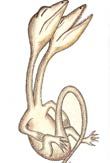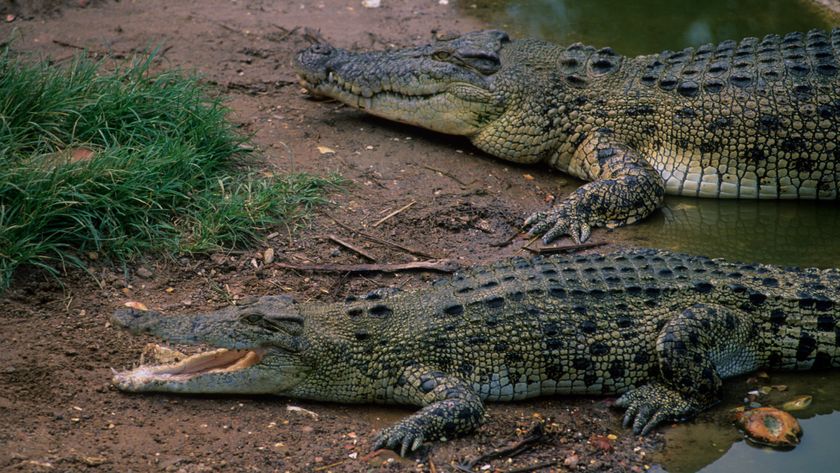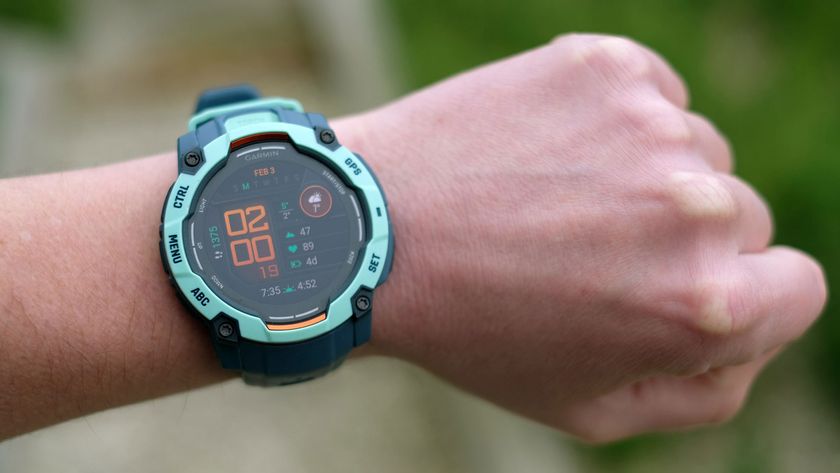
Scientists have unearthed the fossil of a young, two-headed marine reptile that lived when dinosaurs still walked the Earth.
“My first reaction when I saw that fossil was of the ‘Oh my God!’ type,” said lead researcher Eric Buffetaut of the Center for National Scientific Research (CNRS) in Paris, France. “It’s something you would not really expect to see, because the chances of such a freak being fossilized are so slim.”
The discovery, detailed in of the Feb. 22 issue of the journal Biology Letters, marks the earliest known occurrence of a well-known birth defect, called axial bifurcation, in living reptiles. This double-noggin phenomenon occurs when an embryo is damaged and some body parts develop twice.
Buffetaut and his colleagues uncovered the remains [image] in the Yixian Formation in northeastern China, a rich fossil deposit famous for its treasure trove of feathered dinosaur and early bird remains. The creature, called Hyphalosaurus lingyuanensis, died at a young age during the Cretaceous period 120 million years ago, during the twilight of the dinosaur’s reign.
While a reptile, Hyphalosaurus was not a dinosaur. Instead, it belonged to a diverse group of primitive aquatic and semi-aquatic creatures called choristoderes. Some choristoderes looked like lizards or crocodiles, while others resembled miniature versions of plesiosaurs, ancient marine reptiles with barrel-shaped bodies, short tails, paddle-like limbs and, in some cases, long serpentine necks--somewhat like the mythical Loch Ness monster.
Hyphalosaurus belonged to this last class of choristoderes. While the two-headed fossil was just over three inches long, an adult Hyphalosaurus could grow up to three feet in length and would have looked like a baby Nessie [image].
“But the limbs were not flipper-like as in plesiosaurs,” Buffetaut said. “They were similar to lizard limbs.”
Sign up for the Live Science daily newsletter now
Get the world’s most fascinating discoveries delivered straight to your inbox.
How the creature died is unclear. “It seems to have been a hatchling, and perhaps it was still-born,” Buffetaut told LiveScience. “In any case it didn’t live long.”
The new baby Hyphalosaurus specimen not only had two heads; it also had two necks. While rare, this kind of malformation is well known among modern-day reptiles, including lizards, snakes, turtles and tortoises.
Two-headed mammals, including sheep, calves and kittens, are also known but these animals don’t typically live as long.
“Two-headed reptiles manage to survive for some time, probably because they have less complex brains and behaviors than birds or mammals,” Buffetaut said.
- Top Ten Unexplained Phenomena
- Newfound Reptile Swam in Dinosaur Era
- Exhibit Eyes Record for Most 2-Headed Animals
- A Brief History of Dinosaurs













